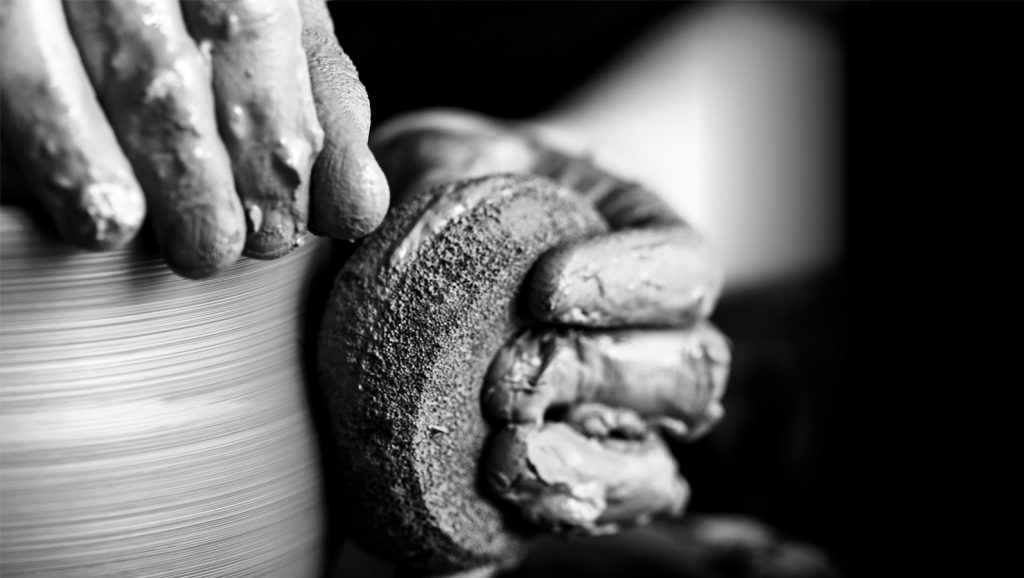Designers, what happened to getting your hands dirty? Not long ago, design was a job where you would head home at the end of a hard day’s work with graphite on your sleeve, marker on your hand, and clay in your fingernails. Today, most designers go home with bird necks and carpal tunnel.
There is a downside to all these amazing new software tools, and if misplaced in the design process, they can make a design feel disconnected. We encourage all designers to use their hands as much as possible. Sketch, color, fold, cut, and make models; put on your bibs and get dirty!
Hand sketches increase the breadth and depth of design exploration. Sketches allow quick embodiment of ideas in a higher resolution than they appear in the mind. They also quickly work through general proportions, fit, and ideas for details in rapid fire, low-resolution. When it comes to ideation, quality is found in quantity.
We have a saying at our company, “Your first ten ideas are no good, so work through them and get to idea number eleven.” Our figurative number eleven represents the result of many hours of hard work and a thorough exploration of the aspects of a design solution from multiple angles and sources of inspiration.
Inspiration exists in the physical medium. The drag of graphite, the texture variant of paper, the glide of a Bic rollerball pen, the touch of a brush, the scratch of a Sharpie, and the thousands of available mediums for sketching from blue pencil, to black tape, all positively affect the realization of the idea and enhance the creative process.
Along the way, the physics of the sketch help to manage the lines and flow of the design in a more attractive and natural way. Embracing happy accidents will help a design feel natural. Unexpected outcomes of physical mediums allow designers to discover what a design could and should be and helps the resulting delivery feel less manipulated.
Michelangelo said, “Every block of stone has a statue inside it and it is the task of the sculptor to discover it.” Many artists, sculptors, and architects have been quoted adhering to this philosophy and we feel product design is no different. Design, throughout the process, should be about discovery. Make rough models with poster board, foam core, hot glue, clay, or whatever you fancy. Cut them apart and make them again, until you discover what the design is meant to be.
We do not need to sketch like Syd Mead to discover our designs and effectively communicate ideas, but a designer that puts no effort into hand sketching is like a tone deaf musician. It’s crippling. When I was younger, I was embarrassed that I could not sketch as well as other designers, and I still can’t sketch as well as many of my peers. But a friend who was a skilled sketcher gave me a tip. He said, “Sketch just an hour a day. Pick something and sketch it.” After only a few months, I was receiving compliments on my sketches and clients were saying things like, “I wish I could sketch like you.” Whenever I heard it, I grinned.
A designer’s space should be a mess. My space has reference materials, prints, textures, and samples spread out over large working surfaces. I look for accidents and try to connect unexpected dots between unrelated subjects. Many of greatest solutions the world has ever seen are the result of cross-pollination. The world may not have ever known penicillin or microwave ovens without what we call “happy accidents.” These innovations would never have happened had creative people not been working toward discovery in a “hands on” physical medium.
Using pre-software tools (classic mediums) will not only enhance the finished product of your design process, it will be more fun! Design should be fun, it’s the magic of creation! When you head home at the end of the day with clay under your fingernails instead of carpal tunnel and a headache, you’ll be looking forward to the mess you’ll get to make the next day.

